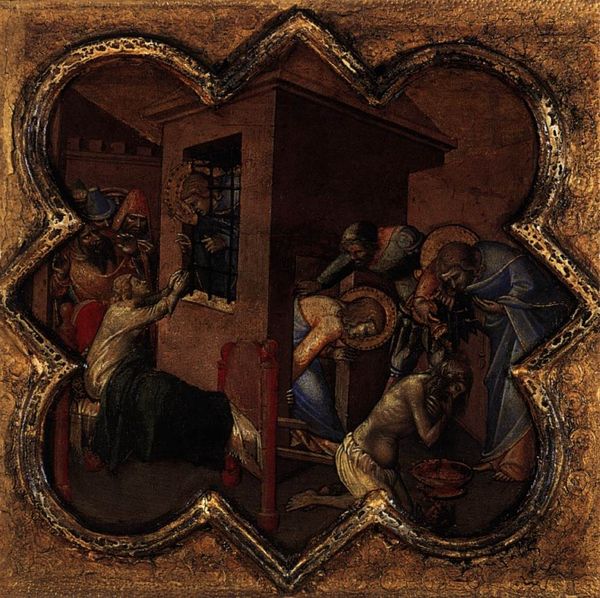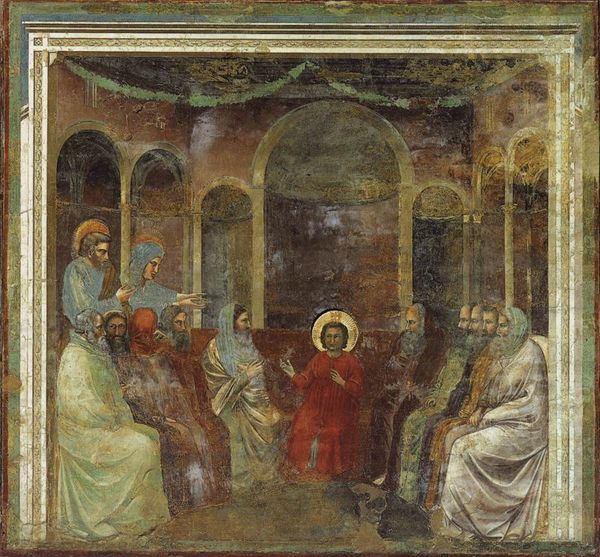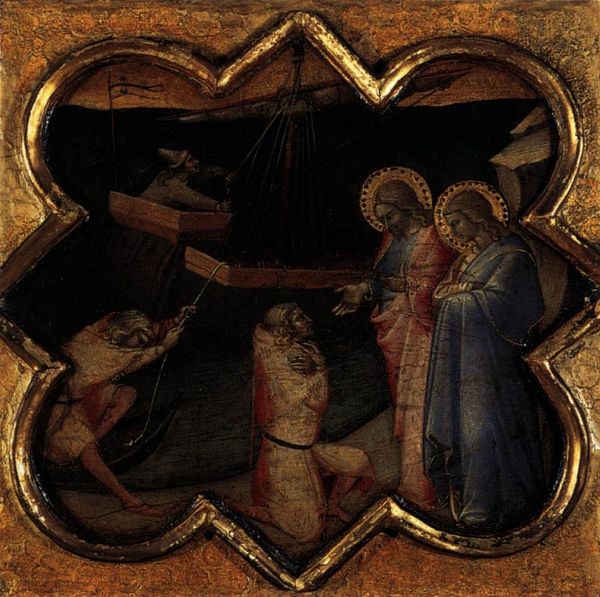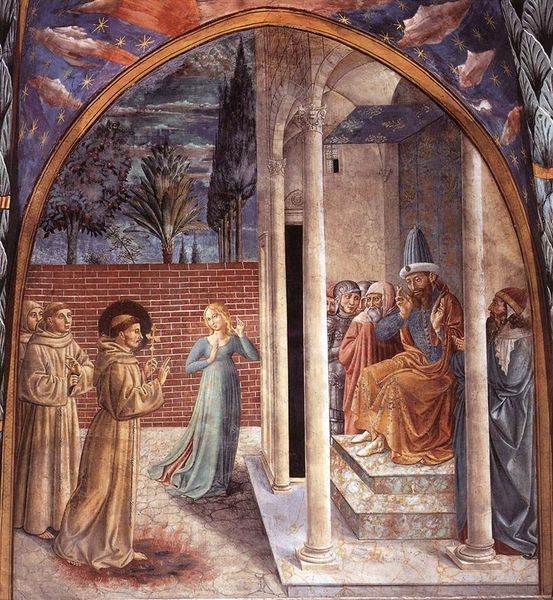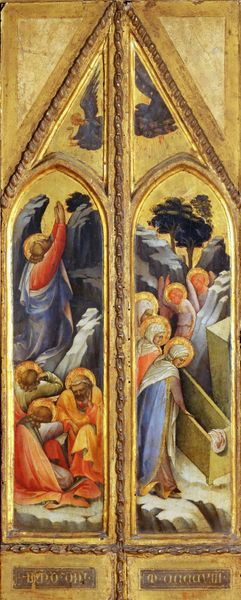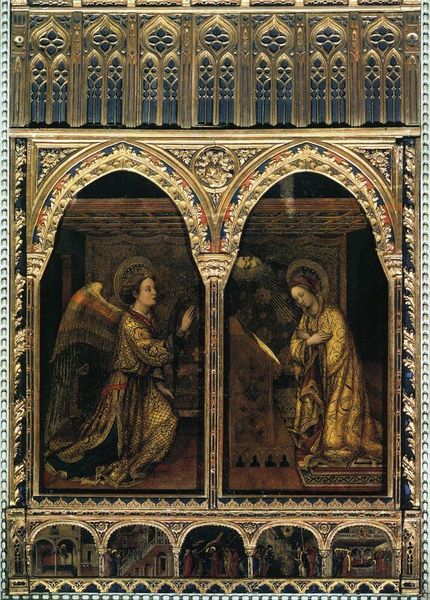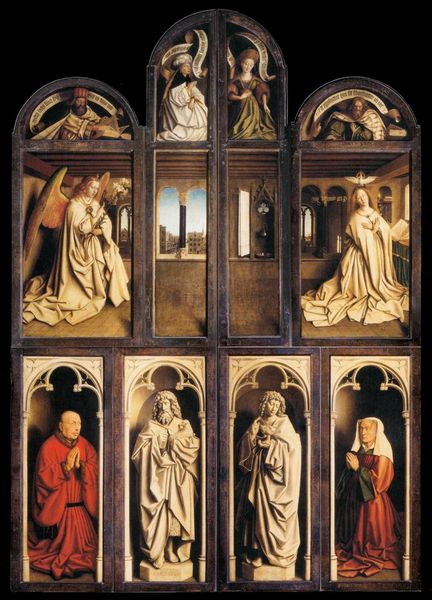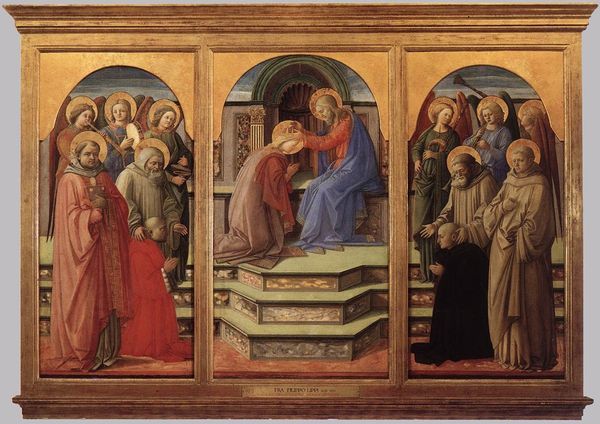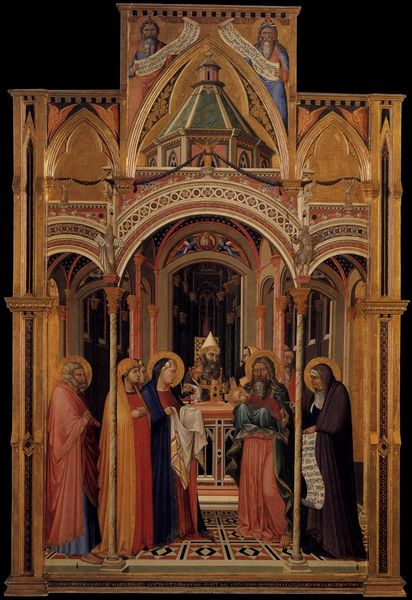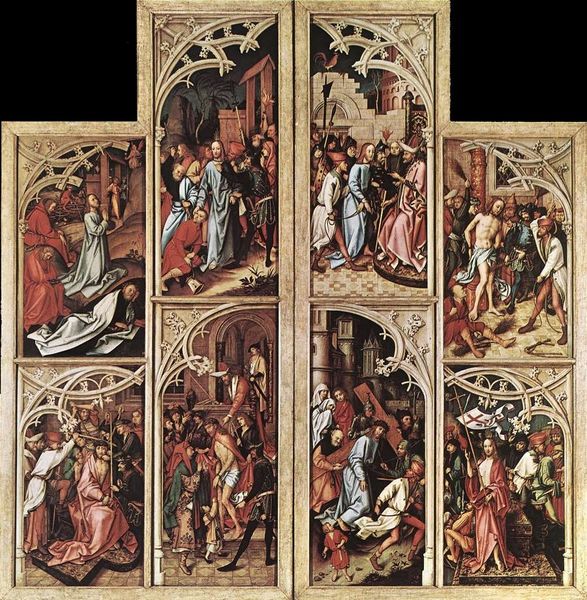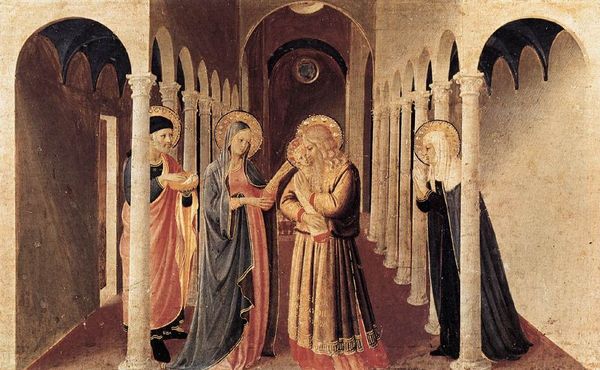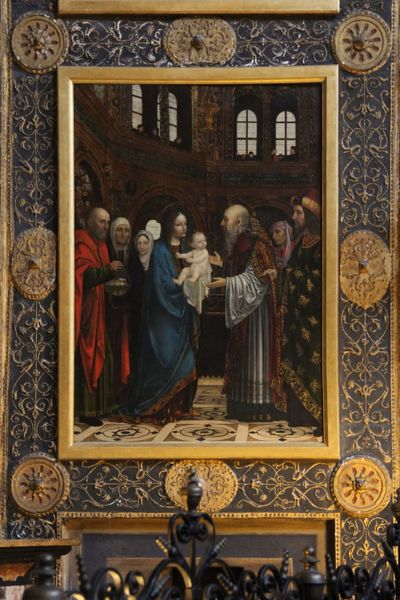
tempera, painting
#
narrative-art
#
tempera
#
painting
#
figuration
#
history-painting
#
italian-renaissance
Copyright: Public domain
Curator: Luca di Tommè's "Scenes from the Life of St. Thomas", done with tempera, offers a snapshot into a medieval mindset. Editor: It strikes me immediately with its compressed space, everyone's sort of squeezed together. Like a stage play where the proscenium arch is much too small, and tragedy and melodrama fight for room to breathe. Curator: That's insightful. The composition does emphasize containment, doesn’t it? This piece is imbued with potent symbolism. St. Thomas, known for his intellectual prowess and doubt, faces moments of intense personal conflict represented here. Editor: Indeed. The light, almost honeyed in tone, focuses acutely on the saint amidst what seems to be... an assassination, a stark opposition to the soft radiance around him. And note the surrounding figures, grouped almost claustrophobically on each side of the scene. It really draws focus to his act of penitence or defiance. Curator: Exactly, the spatial compression mirrors Thomas' internal and external pressures. The assassination itself echoes deeper anxieties, doesn’t it? Consider, also, the robes. Rich crimsons denote passion or bloodshed, perhaps, while the austere blues evoke faith or penance. It’s all layered with meaning, really. Editor: The painting style, it’s inherently narrative, so how might these choices create tension within the storytelling itself? It feels...staged? Like, reality heightened by its representation. The emotional temperature is cranked up by such a theatrical, formal composition. Curator: I feel like di Tommè uses these familiar narrative constructs as almost subversive storytelling devices. He relies on convention even as he upends it, if that makes sense. Editor: It does. And those little gilded frames...are they trapping the image, or offering it up for reverence? Are we meant to reflect on the horror, or transcend it? Curator: Maybe both. Luca di Tommè was quite deft at stirring up seemingly opposing sentiments. Editor: Precisely why revisiting art like this endures through centuries! The paradoxes baked into the work invite new reflection for each new viewer, eternally keeping us in the loop.
Comments
No comments
Be the first to comment and join the conversation on the ultimate creative platform.
